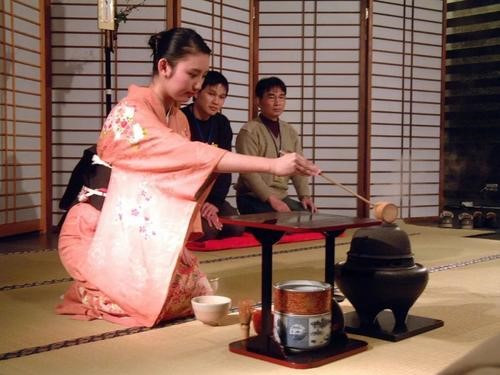You only know Japan when talking about tea ceremony? In fact, the source lies in my country, and it is difficult for Japan not to admit it.
I don't know when it started, but there have been more and more things about Japanese tea ceremony, kendo, flower ceremony and the like. Not only have articles flooded, but training classes have also emerged endlessly. However, most of these "Tao" actually originated from China. Take the tea ceremony as an example. The Japanese themselves have to admit that they learned it from China. In the history of their tea ceremony culture, the tea saint Lu Yu occupied a very important position, and the "Tea Sutra" is the sacred scripture of Japanese tea ceremony culture. The continuous deepening of understanding of the Tea Classic promoted the formation of Japanese tea ceremony culture. Lu Yu and his "Tea Sutra" have become an indispensable spiritual source in Japanese tea ceremony culture.

Tea culture was prevalent in the Tang Dynasty. Lu Yu's self-proclaimed set of thoughts on tea studies, tea art, and tea ceremony, as well as the "Tea Classics" that integrated the essence of his tea ceremony, were an epoch-making symbol. Ouyang Xiu's words,"Since Lu Yu was born in the world, he has made an appointment in the world to serve spring tea" is enough to illustrate Lu Yu's lofty position in the history of the spread of tea.

Lu Yu grew up in a Buddhist temple since he was a child. It is said that Zen Master Zhiji of Longgai Temple was walking on the stone bridge one early morning when he suddenly heard the chirping of geese under the bridge. Upon closer inspection, I found a group of wild geese using their wings to protect a child who was blue from the cold. After the Zen master rescued the child, he felt that he was destined for the child, so he took a divination and named it, and got the divination: "Hung Jian was on the land, and his feathers could be used as instruments." So the name was Lu Yu and the character was Hongjian.

As we all know, most temples in my country are built in deep mountains and valleys, and "good tea has been produced in mountains since ancient times." Therefore, many temples widely grow tea trees, and many monks also like to taste tea. Perhaps because he grew up in this environment, Lu Yu loved tea all his life and was good at tea ceremony. He was not only familiar with the characteristics, quality, and origin of tea, but also proficient in cooking and utensils, and was also very good at planting and picking. In order to carry forward the tea ceremony, he lived in seclusion in Tiaoxi and wrote three volumes of "Tea Classics", becoming the world's first tea monograph.

In the Tang Dynasty, tea drinking became popular in the mainland, but due to its open culture, surrounding ethnic minority areas and even other countries were deeply influenced. As for the spread of tea to Japan, it can be traced back to the era of Tang envoys during the Nara and Heian Dynasties in Japan. At that time, Japanese people who were good at learning often sent missions to China to study. They were interested in many aspects, and tea was also brought to Japan during extensive exchanges. Rongshi, a divine monk in the Kamakura era, based on the Chinese tea ceremony and combined his own insights, created the book "Eating Tea and Nurturing Your Body", allowing tea culture to be widely spread in Japan. By the 16th century, Chirishu pioneered Japan's unique tea ceremony. However, although a unique style has been formed, the study of Chinese tea books has never stopped. The "Detailed Explanation of the Tea Sutra" written by Zen master Dadian clarifies his admiration and understanding of the spirit of Lu Yu's tea ceremony and lays the foundation for the study of the Tea Sutra in modern Japan.

From learning to creating a unique style, I have to admire the Japanese people's strong learning ability. But we must not forget that the source of tea ceremony lies in China. Nowadays, if you want to experience the Tang Dynasty tea ceremony and enjoy tea art performances, the "Luyou Tea House" in Furong Garden is a good place. Here, you can see the tip of the iceberg of Tang Dynasty tea culture."Meet friends at the window and taste Zen tea., smile and look at Qu Jiangbo, and be indifferent."
Previous Article:What do you know about Xi'an tourism that locals don't know?
Next Article:Come to Bailuyuan Film and Television City to experience the strong New Year flavor of Guanzhong
